#overfishing
Text
For years, the people of the Kitasoo/Xai’xais First Nation watched over their waters and waited. They had spent nearly two decades working with Canada’s federal government to negotiate protections for Kitasu Bay, an area off the coast of British Columbia that was vulnerable to overfishing.
But the discussions never seemed to go anywhere. First, they broke down over pushback from the fishing industry, then over a planned oil tanker route directly through Kitasoo/Xai’xais waters.
“We were getting really frustrated with the federal government. They kept jumping onboard and then pulling out,” says Douglas Neasloss, the chief councillor and resource stewardship director of the Kitasoo/Xai’xais First Nation. “Meanwhile, we’d been involved in marine planning for 20 years – and we still had no protected areas.”
Instead, the nation watched as commercial overfishing decimated the fish populations its people had relied on for thousands of years.
Nestled on the west coast of Swindle Island, approximately 500km north of Vancouver, Kitasu Bay is home to a rich array of marine life: urchins and abalone populate the intertidal pools, salmon swim in the streams and halibut take shelter in the deep waters. In March, herring return to spawn in the eelgrass meadows and kelp forests, nourishing humpback whales, eagles, wolves and bears.
“Kitasu Bay is the most important area for the community – that’s where we get all of our food,” Neasloss says. “It’s one of the last areas where you still get a decent spawn of herring.”
So in December 2021, when the Department of Fisheries and Oceans withdrew from discussions once again, the nation decided to act. “My community basically said, ‘We’re tired of waiting. Let’s take it upon ourselves to do something about it,’” Neasloss says.
What they did was unilaterally declare the creation of a new marine protected area (MPA). In June 2022, the nation set aside 33.5 sq km near Laredo Sound as the new Gitdisdzu Lugyeks (Kitasu Bay) MPA – closing the waters of the bay to commercial and sport fishing.
It is a largely unprecedented move. While other marine protected areas in Canada fall under the protection of the federal government through the Oceans Act, Kitasu Bay is the first to be declared under Indigenous law, under the jurisdiction and authority of the Kitasoo/Xai’xais First Nation.

Pictured: "In some ways, I hope someone challenges us" … the Kitasoo/Xai’xais stewardship authority.
Although they did not wait for government approval, the Kitasoo did consult extensively: the declaration was accompanied by a draft management plan, finalised in October after three months of consultation with industry and community stakeholders. But the government did not provide feedback during that period, according to Neasloss, beyond an acknowledgment that it had received the plan...
Approximately 95% of British Columbia is unceded: most First Nations in the province of British Columbia never signed treaties giving up ownership of their lands and waters to the crown. This puts them in a unique position to assert their rights and title, according to Neasloss, who hopes other First Nations will be inspired to take a similarly proactive approach to conservation...
Collaboration remains the goal, and Neasloss points to a landmark agreement between the Haida nation and the government in 1988 to partner in conserving the Gwaii Haanas archipelago, despite both parties asserting their sovereignty over it. A similar deal was made in 2010 for the region’s 3,400 sq km Gwaii Haanas national marine conservation area.
“They found a way to work together, which is pretty exciting,” says Neasloss. “And I think there may be more Indigenous protected areas that are overlaid with something else.”
-via The Guardian, 5/3/23
#indigenous#indigenous issues#indigenous sovereignty#canada#british columbia#land back#first nations#tribal sovereignty#pacific northwest#marine protected area#conservation#sustainability#overfishing#marine science#canadian government#kitasoo-xai'xais#direct action#good news#hope
11K notes
·
View notes
Text
There are more than 1000 species of sharks and rays worldwide. Sharks are apex predators in the ocean and they keep the ecosystem balanced. With decreasing populations, many ecosystems are becoming unbalanced leading to an increase in species that otherwise would have low populations and increased invasive species with no predators.
Due to overfishing and bycatch, some species are on the verge of extinction. Some threatened species include:
The great white shark (classified as vulnerable)

Whale sharks (classified as endangered by the IUCN)
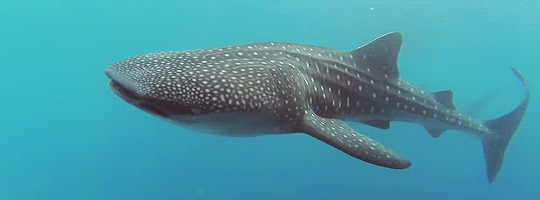
The great hammerhead (classified as critically endangered)

Dusky sharks are officially endangered. They are highly sought after for finning(a practice where fishermen catch and cut the fins from shark ,throw them back into the ocean defenseless to prey ,bleeding out and unable to properly float).
Sand tiger sharks are classified as critically endangered. They have 1-2 pups every two to three’s years making it much more harder for their populations to naturally replenish.
Ganges shark-very rarely seen and it is estimated that approximately 250 of this species are alive. They are true river sharks(can inhabit freshwater) and a unique threat to them is pollution.
To give these sharks and many others a fighting chance,sustainable fishing practices should be enforced and ecosystem pollution should be reduced.
#conservation#nature#ocean#sharks#great white shark#whale shark#shark#sealife#overfishing#extinction#sharksofinstagram#wild animals#sustainable solutions#sustainablelifestyle#sustainability#oceanlife#pollution#wildlife#naturism#marine science#marine biology
194 notes
·
View notes
Text

Who's on the menu?
80 notes
·
View notes
Text
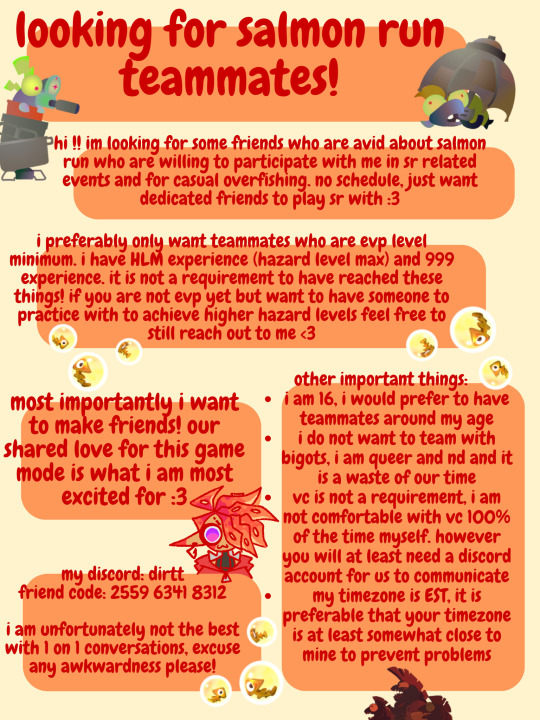
(image desc)
looking for salmon run teammates!
hi !! i'm looking for some friends who are avid about salmon run who are willing to participate with me in sr related events and for casual overfishing. no schedule, just want dedicated friends to play sr with :3
i preferably only want teammates who are evp level minimum. i have HLM experience (hazard level max) and 999 experience. it is not a requirement to have reached these things! if you are not evp yet but want to have someone to practice with to achieve higher hazard levels feel free to still reach out to me <3
other important things:
• i am 16, i would prefer to have teammates around my age
• i do not want to team with bigots, i am queer and nd and it is a waste of our time
• vc is not a requirement, i am not comfortable with vc 100% of the time myself. however you will at least need a discord account for us to communicate
• my timezone is EST, it is preferable that your timezone is at least somewhat close to mine to prevent problems
most importantly i want to make friends! our shared love for this gamemode is what i am most excited for :3
my discord: dirtt
friend code: 2559 6341 8312
i am unfortunately not the best with 1 on 1 conversations, excuse any awkwardness please!
8 notes
·
View notes
Text
youtube
Every week, Eco India brings you stories that inspire you to build a cleaner, greener and better tomorrow.
A Goa-based NGO is helping to protect the marine environment with its adopt-a-coral scheme. Climate change, overfishing and pollution are destroying the area's reefs. The NGO Coastal Impact hopes to stop the decline with coral adoption.
**********
Credits:
Supervising Producer: Nooshin Mowla
Script and Field Producer: Bharat Mirle
Video Editor: Sujit Lad
Associate Producer: Ipsita Basu
Director of Photography: Mithun Bhat
Underwater Cinematographer: Ron Bezbaruah
Voiceover: Chandy Thomas
Production Assistant: Rebekah Awungshi
Executive Producer: Sannuta Raghu
#scroll.in#eco india#solarpunk#tidalpunk#india#coral#coral reef#artificial reef#marine life#ocean#sea#sea life#adopt a coral#Goa#NGO#climate change#overfishing#pollution#NGO Coastal Impact#coastal impact#Venkatesh Charloo#Youtube
6 notes
·
View notes
Text




A little infographic for Big Run/Eggstra Work scores, and overfishing. I am not part of the overfishing community btw! I just think they're neat
#splatoon 3#splatoon#big run#eggstra work#overfishing#it's late for me so i can't do alt text atm apologies#shi talks
29 notes
·
View notes
Text
100 million sharks die every year. 8,500,000 die every month. 300,000 every day. 12,500 every hour. 210 every minute. 3 every second.
In a study conducted by a Dalhousie University biologist, Boris Worm, it was discovered that the originally estimated 100 million sharks may be grandly understated. They learned that a total of 273 million sharks were being killed per year.
To put that into perspective, if 273 million sharks were killed annually, that could be as many as 7-9 sharks per second.
Source:
We need sharks. As a keystone species, the ocean ecosystem will die without them. Overfishing, loss of habitat, and finning are killing sharks at a rate they cannot recover from.
Donating to shark conservation organizations can be a great first step to saving the sharks.
And, because that was a heavy topic, here’s a shark in a party hat.
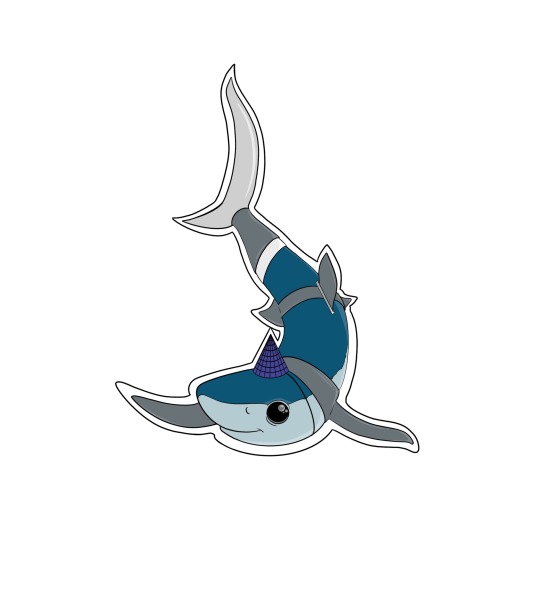
#save the sharks#save the sea#save the ocean#ocean conservation#important#shark finning#overfishing#habitat#loss#100 million#fypシ゚viral#what even gets seen nowadays#marine biodiversity#marine biology#marine life#marine mammals#sharks#great white shark#mako shark#shark rambles#shark week
70 notes
·
View notes
Photo

"BARBAR" for Lasso literature journal
#illustration#editorial#art#artists on tumblr#fish illustration#overfishing#fishing net#vikobelo#lasso#tidsskrift#commission
21 notes
·
View notes
Text
#like... that's fucked up#the critters are stabbed in the heart they steal most of their blood and then throw them back in the ocean to die#news#npr#6/10/2023#horseshoe crabs#horseshoe crab#bleeding alive#biomedical research#overfishing#corporate greed#uncute animals#not charismatic megafauna#marine life#animal testing#tw: animal death#environment#environmentalism#blue blood#that's their blood not energy drinks as my brain first thought looking at that image#wanna see something fucked up?
8 notes
·
View notes
Text
Wildtype’s co-founder and CEO, Justin Kolbeck, a former diplomat who has worked on food insecurity abroad, worries about how current practices would feed a growing population’s demand for seafood.
“The scope of what we’re facing is so massive that if we don’t all succeed, we as a species will collectively fail,” he said. “We can’t fix this when we’re at that point – we need to fix it now when there’s still time for oceans to recover.”
In many cases, seafood products travel multiple times around the world before reaching the end consumer.
"We’re one environmental disaster away from extraordinary disruption to the supply chain and the global consumption of seafood is at an all-time high,” said Lou Cooperhouse, founder and CEO of BlueNalu, which is initially focused on growing bluefin tuna toro. In the next decade, he envisions factories being built around the world that can meet consumption demands and says they are ready to scale quickly.
Sustainable sources of seafood are needed to meet the demand from a growing global population that is on pace to reach 10 billion by 2050. While plant-based alternatives that look and taste like fish are gaining traction, cruelty-free cultivated seafood products could be on dinner plates in the next year or two, pending regulatory approval from the US food and drug administration.
But critics say in order for cell-cultivated seafood to be a better bet for the planet than fishing or farming, the industry would have to make their expensive products cost-competitive and get consumers to willingly substitute it for wild-caught fish.
It also needs to be eaten in numbers high enough to replace wild-caught fish. Researchers say this is unlikely, given the fact that aquaculture, the farming of aquatic organisms, hasn’t succeeded in replacing global wild-caught fisheries but is simply adding to seafood production.
“I’m really skeptical of claims that cell-based seafood companies will make a difference for fisheries and ocean conservation,” said Benjamin Halpern, a marine biologist at the University of California, Santa Barbara, who has researched cultivated seafood’s ability to reduce fishing pressure.
The state of California recently made the largest single investment in alternative protein research of any US state. The $5m (£4.4m) in funding is being split between three University of California schools: UC Berkeley, UC Davis and UCLA. And the Biden administration is backing lab-grown meat as referenced in a recent executive order.
When grown indoors, cell-cultured seafood like salmon and tuna can be optimized for taste, texture and nutritional content, and cooked like traditional fish or eaten like sushi. But it remains unknown if consumers will embrace lab-grown fish.
“We talk a lot about price, taste and convenience as the three core aspects the alt-protein industry needs to focus on,” said Marika Azoff, a corporate engagement specialist at the Good Food Institute, a non-profit advocacy group that promotes alternative proteins. “They need to taste the same or better, they need to be priced the same or cheaper, and they need to be widely available.”
“I see a role for alternative seafood production in the sustainable seafood equation, just as I do for sustainably harvested wild fisheries and sustainable aquaculture,” said Rob Jones, global head of aquaculture at the Nature Conservancy. “Both cell-based and plant-based seafood can be a part of that future.”
Jones said alternative seafood products could achieve a similar 1% to 2% of the overall market, similar to plant-based meats, but that the full environmental and social effects of the production methods, such as carbon emissions and ingredient sourcing policies, must be considered.
Most alt-seafood companies won’t share their intellectual property and it’s unknown just how energy-intensive cell culturing is at this stage. BlueNalu’s Cooperhouse likens it to beer or beverage production and says it’s important to remember that the current seafood industry is incredibly resource-intensive.
“Your resources are labor on ships, oil, massive transportation and the many animal lives lost for a very inefficient 50% to 70% yield depending on species,” he said. “Let’s address the global supply chain issues and solve them one species at a time.”
BlueNalu and Wildtype say there’s no single solution to meeting the world’s demand for seafood, but believe their presence can lead to greater sustainability in the industry.
“Fish farms recognize that their current practices need to change and commercial fishing operations know something needs to change,” said Wildtype’s co-founder Aryé Elfenbein, who is also a cardiologist. “Our role is to assist with that transition – that’s really what we’re there for.”
#fish#seafood#overfishing#sustainability#food security#lab grown food#cell culture#science#conservation#excerpts
22 notes
·
View notes
Text
"When Francois Beyers first pitched the concept of 3D ocean farming to the Welsh regulators, he had to sketch it on napkins.
Today the seafood farm is much more than a drawing, but if you walked along the Welsh coastal path near St David’s, all you’d see is a line of buoys. As Beyers puts it: “It’s what’s below that’s important.”
Thick tussles of lustrous seaweed suspend from the buoys, mussels cling to its furry connective ropes and dangling Chinese lantern-esque nets are filled with oysters and scallops.
“It’s like an underwater garden,” says Beyers, co-founder of the community-owned regenerative ocean farm, Câr-y-Môr. The 3-hectare site is part of a fledgling sector, one of 12 farms in the UK, which key players believe could boost ocean biodiversity, produce sustainable agricultural fertiliser and provide year-round employment in areas that have traditionally been dependent on tourism.
Created in 2020 by Beyers and six family members, including his father-in-law – an ex-shellfish farmer – the motivation is apparent in the name, which is Welsh for “for the love of the sea”. ...
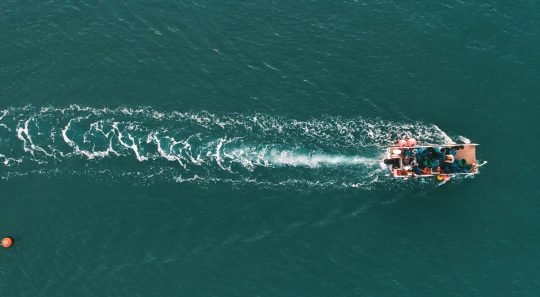
Pictured: Drone shot of Câr-y-Môr, which is on the site of abandoned mussel farms. Image: Scott Chalmers
Ocean farming comes from the technical term ‘integrated multi-trophic aquaculture’, which means a mixture of different seaweed and shellfish species growing together to mutually benefit each other. But it’s not just a way of growing food with little human input, it also creates ocean habitat.
“You’re creating a breeding ground for marine animals,” explains Beyers who adds that the site has seen more gannets diving, porpoises and seals – to name a few – since before the farm was established.
Ocean farms like Câr-y-Môr, notes Ross Brown – environmental research fellow at the University of Exeter – have substantial conservation benefits.
“Setting up a seaweed farm creates an exclusion zone so fishermen can’t trawl it,” explains Brown, who has been conducting experiments on the impacts of seaweed and shellfish farms across the UK.
Brown believes a thriving ocean farming industry could provide solutions to the UK’s fish stock, which is in “a deeply troubling state” according to a report that found half of the key populations to be overfished. “It would create stepping stones where we have safe havens for fish and other organisms,” he adds.
But UK regulators have adopted a cautious approach, note Brown and Beyers, making it difficult for businesses like Câr-y-Môr to obtain licenses. “It’s been a tough old slog,” says Beyers, whose aim is to change the legislation to make it easier for others to start ocean farms.
Despite navigating uncharted territories, the business now has 14 full-time employees, and 300 community members, of which nearly 100 have invested in the community-benefit society. For member and funding manager Tracey Gilbert-Falconer, the model brings expertise but most importantly, buy-in from the tight-knit local community.
“You need to work with the community than forcing yourself in,” she observes.
And Câr-y-Môr is poised to double its workforce in 2024 thanks to a Defra grant of £1.1 million to promote and develop the Welsh seafood industry as part of the UK Seafood Fund Infrastructure Scheme. This will go towards building a processing hub, set to be operational in April, to produce agricultural fertiliser from seaweed.
Full of mineral nutrients and phosphorous from the ocean, seaweed use in farming is nothing new, as Gilbert-Falconer notes: “Farmers in Pembrokeshire talk about their grandad going down to the sea and throwing [seaweed] on their farms.”
But as the war in Ukraine has caused the price of chemical fertiliser to soar, and the sector tries to reduce its environmental impact – of which synthetic fertiliser contributes 5% of total UK emissions – farmers and government are increasingly looking to seaweed.
The new hub will have capacity to make 65,000 litres of sustainable fertiliser annually with the potential to cover 13,000 acres of farmland.
But to feed the processing hub, generate profit and reduce their dependency on grants, the co-op needs to increase the ocean farm size from three to 13 hectares. If they obtain licences, Beyers says they should break even in 18 months.
For now, Beyers reflects on a “humbling” three years but revels in the potential uses of seaweed, from construction material to clothing.
“I haven’t seen the limit yet,” he smiles."
-via Positive.News, February 19, 2024
#wales#welsh#ocean#marine biology#aquaculture#marine life#marine animals#seaweed#sea scallops#oysters#united kingdom#uk#conservation#conservation news#overfishing#environmental news#farming#sustainable agriculture#sustainability#ocean farming#good news#hope
463 notes
·
View notes
Text
me watching my crew rush the shoreline to splat a scrapper at the start of the wave for the Nth time today in freelance:
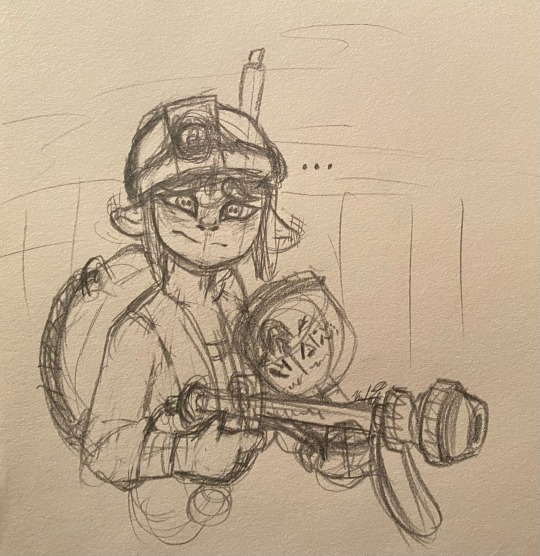
#chiller's art#Eggsecutive VP btw#like-#just wait a second????#it’ll come to you#and you won’t be swarmed by lessers and lose the round in ten seconds#this happens way too often#splatoon#splatoon 3#salmon run#splatoon 3 salmon run#overfishing
8 notes
·
View notes
Text
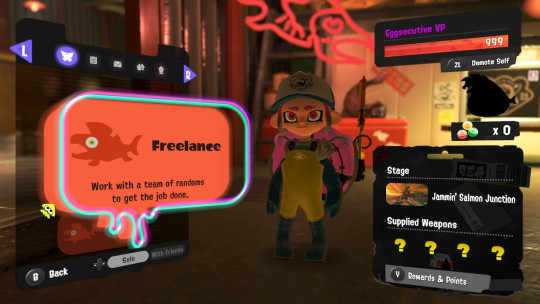
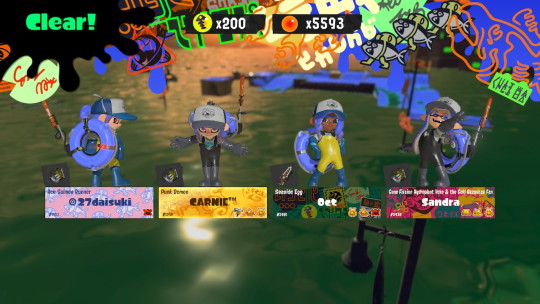

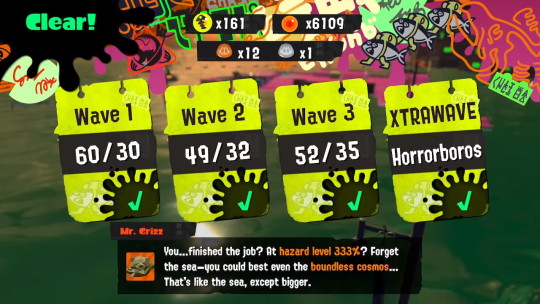
highlights of the day 🥲🥲
ended it off with a solid freelance 161 hlm and 999!!!
#I'm so happy!!! what a great day#gotta love golden rotation#dai speaks#salmon run#overfishing#splatoon 3
2 notes
·
View notes
Link
Excerpt from this story from Inside Climate News:
A globe-spanning study published Thursday outlines new, potentially unexpected threats to ocean ecosystems and vulnerable coastal communities within the next five to 10 years that will come on top of the already harmful effects of overfishing, pollution and global warming.
The goal of what the research team calls a horizon scan is to try to prevent ecological catastrophes. Many of the emerging menaces are linked with global warming, including runoff from areas burned by wildfires, the potentially toxic effects of new biodegradable materials intended to replace plastics, lithium mining from ocean-bottom brine deposits and a rise in toxic metal contamination driven by ocean acidification.
The research, published in Nature Ecology and Evolution, also warns that many fish will move away from the hottest equatorial ocean regions, leaving a dead zone that diminishes food security for millions of people in developing countries, who rely on fish for daily nutrition. Where fish do remain, global warming appears to reduce their nutritional content because in warmer oceans, plankton produce fewer fatty acids for the fish to consume.
The research team included 30 experts from 11 countries who joined forces to identify emerging changes to marine and coastal habitats. Using a method known as horizon scanning, scientists submitted a total of 75 new ocean issues just appearing on the science radar.
The entire team, made up of marine and coastal scientists, practitioners, and policymakers narrowed and divided the list of issues through several rounds of reading and voting into three main categories: ecosystem impacts, resource exploitation and novel technologies.
Through that process, the researchers realized that it would take 10 to 15 years before they fully understand “whether or not these issues are going to come to provenance,” Thornton said. “We feel it gives the opportunity for policymakers and practitioners to at least have a think and say, ‘Hang on, we haven’t thought of that.’”
#oceans#marine ecology#overfishing#water pollution#plastics#climate change#deep sea mining#ocean biodiversity
13 notes
·
View notes
Quote
Vast parts of the world's oceans are still the Wild West when it comes to conservation. Fishing, shipping, tourism and ocean protection are currently controlled by around 20 organizations. However, their regulations only apply to a distance of 200 nautical miles (370 kilometers) from the coast. Farther out, international waters start, and individual states don't have any power or say. Although the high seas make up more than half of the surface of the Earth and 61% of all oceans, only 1% of international waters are under protection. Illegal fishing, overfishing and other forms of damage to the ecosystem, such as deep-sea mining, oil and gas drilling, can hardly be monitored, tracked or prosecuted in a consistent way.
Tim Schauenberg, ‘How to save our high seas from overfishing, pollution’, BBC
#BBC#Tim Schauenberg#high seas#overfishing#pollution#conservation#shipping#tourism#oil and gas drilling#deep-sea mining
2 notes
·
View notes
Text
2 notes
·
View notes